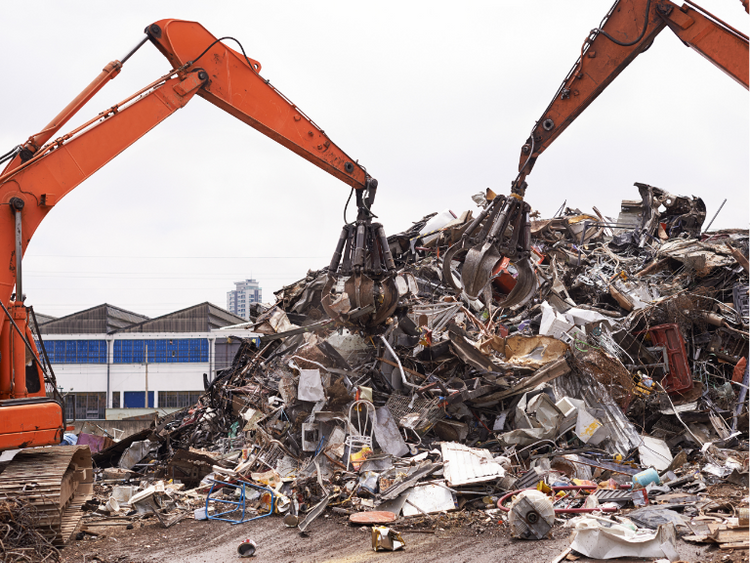Product

July 23, 2019
Steel Buyers React to Third Round of Price Increases
Written by John Packard
This week we solicited input from steel buyers (and steel mills) regarding their reaction to the third round of price increases, which was kicked off by ArcelorMittal USA yesterday.
On June 24, Nucor announced the first of the latest round of mill price increases on spot flat rolled steel. Nucor advised that hot rolled, cold rolled and coated products produced by their mills would go up by $40 per ton ($2.00/cwt) from their existing transaction levels. The other mills followed suit except for NLMK USA, which decided to spell out specific base price levels of $560 per ton ($28.00/cwt) on hot rolled and $700 per ton ($35.00/cwt) on cold rolled and coated steels.
The second round of increases was also led by Nucor two weeks after their first announcement. On July 9, Nucor advised that spot flat rolled prices were being increased by an additional $40 per ton ($2.00/cwt). The other domestic steel producers followed with their own $40 per ton announcements. The total of the two increases was $80 per ton (+/- depending on your starting point).
![]() This week, ArcelorMittal USA led with the third price increase announcement since June 24. The AMUSA announcement included specific guidance for base pricing of $630 per ton ($31.50/cwt) on hot rolled and $800 per ton ($40.00/cwt) on cold rolled and coated steels. Unlike the NLMK USA base price guidance level provided during the late June group of announcements, the AMUSA announcement calls for a $170 per ton ($8.50/cwt) spread between hot rolled and cold rolled/galvanized/Galvalume levels. The NLMK USA spread was a more traditional $140 per ton ($7.00/cwt).
This week, ArcelorMittal USA led with the third price increase announcement since June 24. The AMUSA announcement included specific guidance for base pricing of $630 per ton ($31.50/cwt) on hot rolled and $800 per ton ($40.00/cwt) on cold rolled and coated steels. Unlike the NLMK USA base price guidance level provided during the late June group of announcements, the AMUSA announcement calls for a $170 per ton ($8.50/cwt) spread between hot rolled and cold rolled/galvanized/Galvalume levels. The NLMK USA spread was a more traditional $140 per ton ($7.00/cwt).
Nucor, U.S. Steel and USS/POSCO have followed ArcelorMittal USA with $40 per ton price increases. Nucor customers have advised SMU their base pricing is now $620 per ton ($31.00/cwt) versus the AMUSA $630 per ton ($31.50/cwt). As of this writing, SMU was waiting for NLMK USA to advise if they are moving off their $600 per ton ($30.00/cwt) hot rolled and $740 per ton ($37.00/cwt) cold rolled and coated base pricing.
The base prices referenced above are the “asking” prices; actual transactions may be radically different. An example would be one galvanized buyer who advised of a 1,400-ton order placed last week at $35.50/cwt base ($710 per ton). This represents a $30 per ton discount from the guidance suggested by NLMK USA in their last announcement. The buyer did not yet know how their supplier was going to react to the new $40 per ton price increase, but assumed the mill would attempt to collect part or all of it.
Mill Lead Times are Moving Out
Steel buyers are sending over mill lead times and we are beginning to see the word “inquire” for some products. This is an indicator of firmness at least on that product from that mill. A good example is Steel Dynamics, which has “inquire” on cold rolled and most coated products and is closed on all painted products from their Butler facility. Their hot rolled lead times, which are traditionally much shorter than the rest of the industry due to their business model for that plant, are into mid and late August. The Columbus plant has hot rolled lead times in early to mid-September. Cold rolled at Columbus is mid-September, while coated and painted products are either referenced as being “inquire” or closed. Lead times at The Techs and Heartland are early to mid-September on coated products.
{loadposition reserved_message}
ArcelorMittal USA, which led this week’s price increase, advised their customers of hot rolled lead times in early September (9/1) in all plants but Calvert (8/25), which uses slabs. Cold rolled lead times are 9/1 to 9/22 depending on the mill. Coated products out of AMUSA are late September (9/22) to mid-October (10/13 at Burns Harbor) or are “inquire.”
Nucor Berkeley lead times are running mid-to-late August on hot rolled, “inquire” on cold rolled and late August (week ending 8/31) to mid-to-late September on galvanized.
SMU will have more regarding our “average” lead times, which is produced from our flat rolled and plate steel market trends survey. The survey is ongoing and we will report what we are seeing for lead time changes based on steel buyer inputs on Thursday of this week.
What Steel Buyers are Saying
“Mill Lead times are growing, input costs are higher, service center inventories are on the lean side, foreign is non-existent, and demand in the nonresidential construction and energy markets is growing. I think big buyers bought short, too, so should see steady demand for a few months. After September, things become more cloudy.” Service center executive
“This is Spring 2018 all over again. They will at least get the $80/ton, but probably no more. Demand is not that good and manufacturing is down domestically. The economy isn’t all that great. But lead times are pushing out; no imports inbound YET, which helps their cause… Looks like they didn’t learn their lesson the last time. They pushed prices higher rapidly in 2018 and now they are doing it again. Then we will have another long price drop like the last 12 months….” This general manager of a manufacturing company also said their company was beginning to look at foreign steel, “Yes, just started getting lots of offers today [from] overseas….”
“To the extent that the mills can create/generate more activity now by constantly raising prices, then they will be ‘successful’ in the short run, if lead-times extend enough. However, there’s a finite amount of demand to fulfill between now and the end of the year. My fear is that they are simply going to pull ahead orders, and that will delay any further mill production cuts, which are still needed to balance supply/demand. Buyers may indeed be forced to place orders further out than they want to if lead-times in fact extend, but if there was ever a time to be wary of drinking the kool-aid, then this surely is it.”
“The U.S. sheet market is morphing into some kind of separate market unto itself. When you look at all of the other steel products – plate, structural, bars, etc, – they more or less follow the supply/demand fundamentals pretty closely, and there’s a closer relationship to scrap prices, etc. Ever since Section 232, the sheet market has taken on a life of its own with dramatic and large swings in prices up and down. So, these latest moves are just a continuation of the same phenomenon. Have the mills basically lost most of their credibility when trying to explain reasons around sheet price increases? Yes. Does it matter? No. I think they are overdoing it, and if they truly wanted higher prices that will stick, it would occur in a more measured fashion.”
“There’s a real sense of desperation from the mills, where they indeed do not trust that the market will hold onto increases if they take a more measured approach. So, they seem to be raising the price wildly, hoping to get prices up by sheer force/repetition. This might provide some short-term relief, but it increases the chances these will not sustain, barring a sharp increase in scrap costs and/or an increase on the demand side.” General manager, service center
“Maybe $50 to $60/ton might stick for a period of time in Q3, but then soften down again.”
“I have instructed my buyers not to purchase stock items at some of the new spot quotes we’ve seen, so you might see a buyer’s strike roll on. I follow ITR very closely and other economic data. Demand is slowing a bit; it’s very evident in automotive and other sectors. As ITR states – all segments are on the back side of the business cycle. It will be weak for the balance of 2019 and into 2020. I am not seeing lead times move out yet as one would expect.” Steel buyer, manufacturing/distribution
“They really want $600 and they will get it. It’s all about lead times.” Steel buyer, service center
From a Steel Mill Executive
“I think the fall from $940 to $505 was too much, too fast. Way overshot a fair value. So, just adjusting to where the prices should be, in my opinion.”







